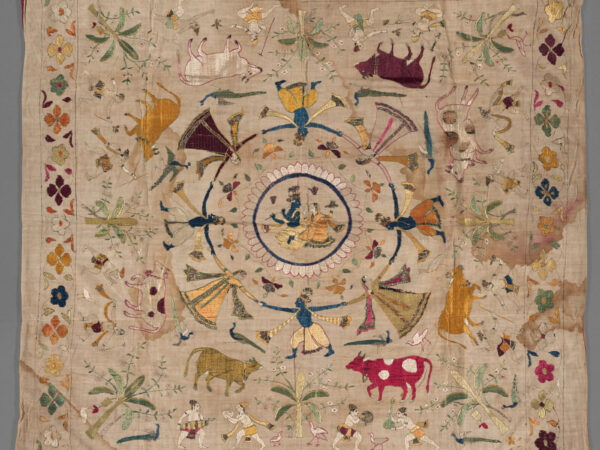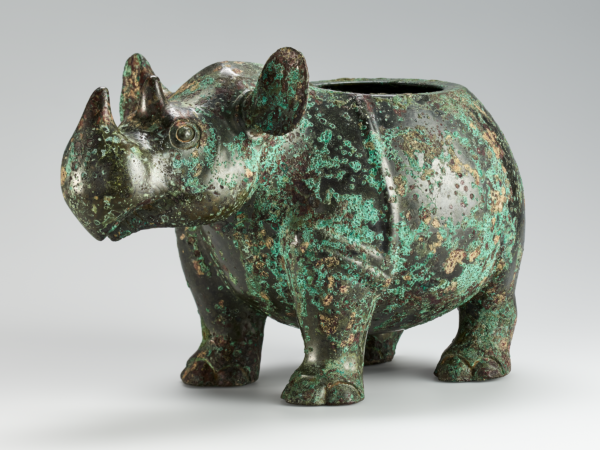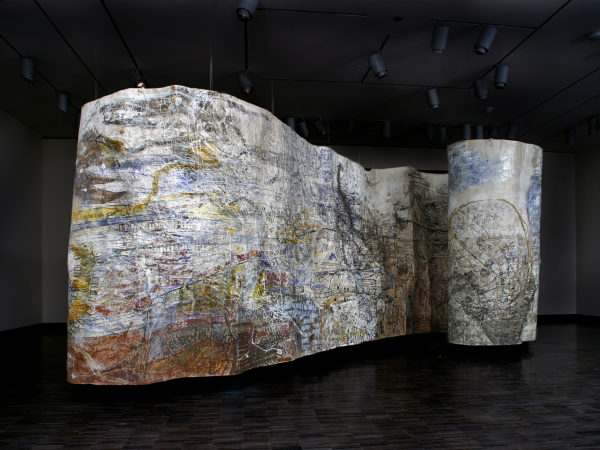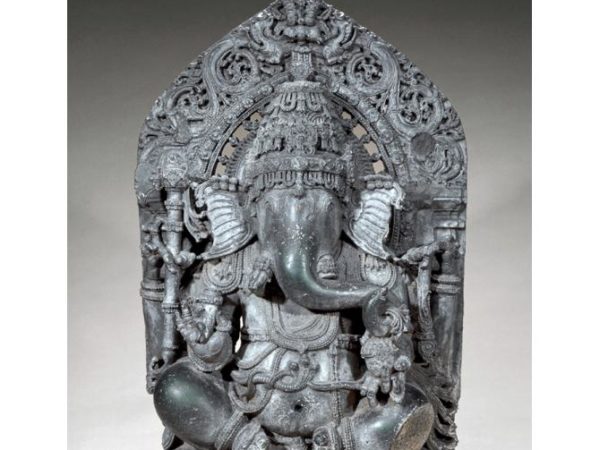Activity
Hindu Deity Vishnu, 1100–1200
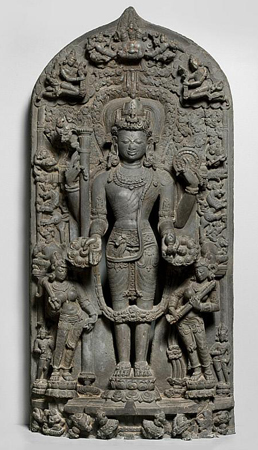
The Hindu deity Vishnu, 1100–120
Who is depicted here?
This stone stele depicts the Hindu god Vishnu, attended by two consorts, Lakshmi (lower left) and Sarasvati (lower right). Vishnu is the god of Preservation, the great maintainer who often appears in various incarnations (avatara) to provide salvation for humanity. Some of his best-known avatars, who are tremendously popular and beloved throughout Hindu India, are the gods Krishna and Rama. While the god Shiva may appear as ferocious and terrifying, the god Vishnu generally appears as a princely and benevolent being, sometimes even in a charming and playful childlike form. Vishnu, like Shiva, is capable of conquering tremendous adversaries and is likewise armed with various weapons.
Here Vishnu appears as a kingly god, standing erect on a double lotus pedestal. Lakshmi is the goddess of beauty and good fortune. Sarasvati is the goddess of learning, music, and poetry. Vishnu is accompanied by his vehicle, the bird Garuda, seen here beneath Lakshmi as a bird-like human with a hooked nose and small wings.
How do you recognize Vishnu?
Vishnu can be identified by the attributes he holds in his four hands. His two raised arms hold a mace or club and a discus. His lower hands hold a conch shell and seed; his lower right hand is in the gift-giving gesture (varada mudra). More lotuses are visible beneath his lower hands. As a kingly figure, Vishnu is adorned with an elaborate crown and jewelry, including a necklace, earrings, armbands and a girdle. The long garland flowing in front of his body and crossing at the knees is called a mala. Some of his attributes are weapons of war. The conch shell is blown during battle. The discus has a sharp, jagged edge and is hurled through the air to cut like a knife. Compare this Vishnu with a sandstone sculpture of Vishnu from central India, and another from the Hoysala period in southern India in the Asian Art Museum galleries. What similarities and differences can you identify?
How do you recognize the goddesses?
Lakshmi is the usual consort (or female aspect or partner) of Vishnu, and is recognized by the fly whisk and lotus. The lotus is associated with life-giving waters and abundance. In another form, she is usually depicted on a lotus with attendants and elephants bathing her. Sarasvati is often seen on her own, or with Brahma, and can be identified by the musical instrument she carries, a vina. The vina symbolizes the beauty of the mind in speech, song and wisdom. She is often seen with a peacock. In this sculpture, both female figures stand on lotus pedestals in a three-bend posture (bending at the waist, hips and knees), which gives the figures a graceful appearance. See if you can find other representations of these goddesses in the galleries.
How would this sculpture have been used?
This sculpture was made during the Pala period (1000–1200 CE) in northeastern India. The gray black stone stele is typical of the region. The combination of the deeply three-dimensional central figure raised from a rigorously incised, detailed background is also typical of the period. The stele shape indicates that the piece was meant to be viewed from the front. No complete structural temples have survived from this time. However, we can assume that this sculpture would have been placed in a niche in a temple devoted to Vishnu.

